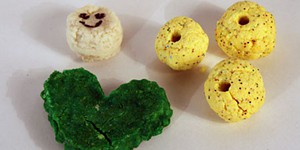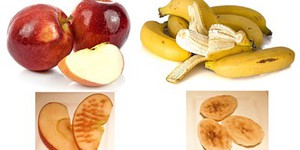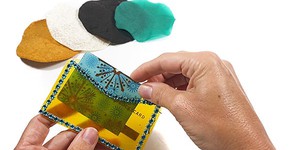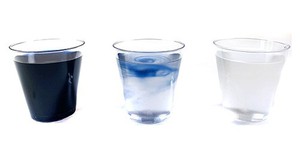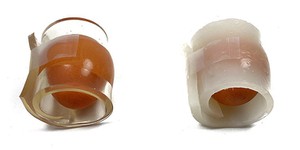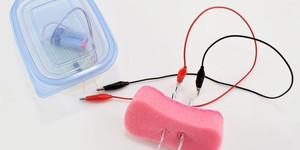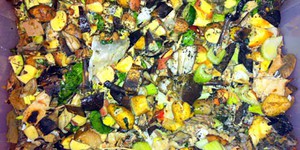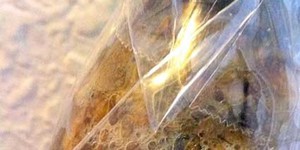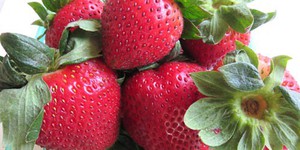U.N. Sustainable Development Goal: Responsible Consumption and Production (66 results)
The United Nations Sustainable Development Goals (UNSDGs) are a blueprint to achieve a better and more sustainable future for all.
These projects explore topics key to Responsible Consumption and Production: Ensure sustainable consumption and production patterns.
These projects explore topics key to Responsible Consumption and Production: Ensure sustainable consumption and production patterns.
|
Sort by
|
"Plastic made from milk" —that certainly sounds like something made-up. If you agree, you may be
surprised to learn that in the early 20th century, milk was used to make many different plastic
ornaments —including jewelry for Queen Mary of England! In this chemistry science project, you can figure out the best recipe to make your own milk plastic (usually called casein plastic) and use it to make beads, ornaments, or other items.
Read more
Have you ever wondered why apple slices turn brown once you cut them, or why a yellow banana gets dark spots over time? In this project you will find out why this happens, and how you can keep your apple slices looking fresh!
Read more
Can you imagine clothing, handbags, or shoes made from seaweed or spider silk? To become more sustainable, the textile industry is looking for ways to develop more eco-friendly fabrics. Biofabrics derived from living organisms such as seaweed or bacteria have been proposed as a potential alternative to conventional fibers. In this science project, you will make several biofabrics from alginate (seaweed) and conduct tests to find out which one is most suitable as a textile replacement.
Read more
The iodine clock reaction is a favorite demonstration reaction in chemistry classes that usually requires toxic or hazardous chemicals. During the reaction, two clear liquids are mixed, resulting in another clear liquid. After some time, the solution suddenly turns dark blue. The reaction is called a clock reaction because the amount of time that elapses before the solution turns blue depends on the concentrations of the starting chemicals. In this green chemistry project, you will use a…
Read more
Many foods, such as fresh fruits, vegetables, or eggs, are packaged in plastic to protect them from damage during handling and transport. But is plastic the best choice? What if a more sustainable and biodegradable material could replace it? Researchers have begun exploring hydrogels—squishy materials that can hold a lot of water—as alternative packaging materials. In this science project, you will make your own hydrogels from gelatin and cornstarch and investigate what ratio of…
Read more
Water is a valuable resource, and water shortages are a serious problem in many parts of the world. The problem can be made worse by people who waste water; for example, by watering a garden or using sprinklers on their lawn (or a farmer taking care of an entire field) when it has rained recently or the soil is already moist. How can you help conserve water and prevent such waste? One way is to build an electronic soil moisture sensor. This project will show you how to build a circuit that…
Read more
Have you ever seen a product labeled "biodegradable" or "compostable" and wondered just how well it decomposes? A lot of different products claim to be biodegradable or compostable, such as food containers, bags, packaging materials, and spoons and forks. Not only do they clearly come in different shapes and sizes, but they are made of different materials as well. Do they decompose differently, and, if so, which decomposes the fastest? In this science project, you will make your own indoor…
Read more
So you've just finished mowing the lawn on a hot summer day, and you'd like a cold, refreshing drink as a reward. You look in the fridge, and oops! it's empty. The sodas are still sitting in the cupboard, at room temperature. What's the fastest way to get that soda down to a cold, drinkable temperature with materials readily at hand?
Read more
Have you ever dreamed of a world where you could take the scraps from last night's dinner and toss them into your car's fuel tank and make gas? Well, we're not quite in "Back to the Future" yet, but in this energy science fair project, you'll discover that food scraps, dead plants, sawdust, and other decaying organic matter, called biomass are a rich source of energy. You can get energy out of biomass by burning it, turning it into a liquid, or by turning it into a gas called biogas. You've…
Read more
Fuzzy things are often cute, but not when that fuzziness is mold on your strawberry—yuck! Companies look for natural, plant-based ways to protect the berries from mold when they are in the store, waiting for you to purchase them. Would washing them in aloe vera juice protect strawberries from mold? Do this project and find out!
Read more
|
Explore Our Science Videos
Making False-Color X-ray Images with NASA Files from the Chandra Observatory
Build an Infinity Mirror | Science Project
Line-Tracking Robot: BlueBot Project #3



